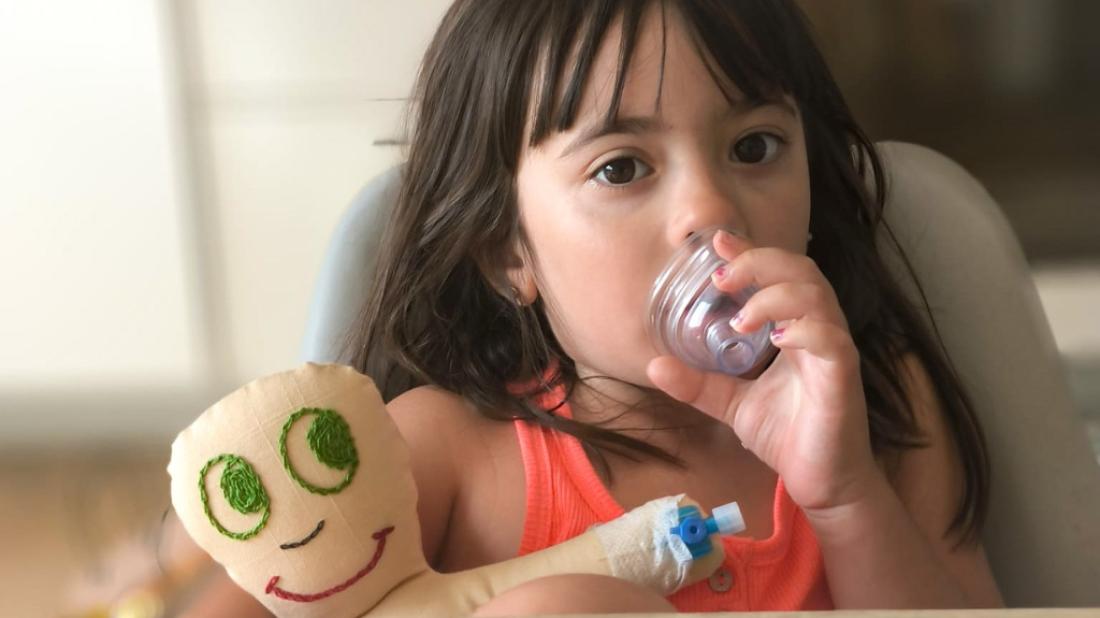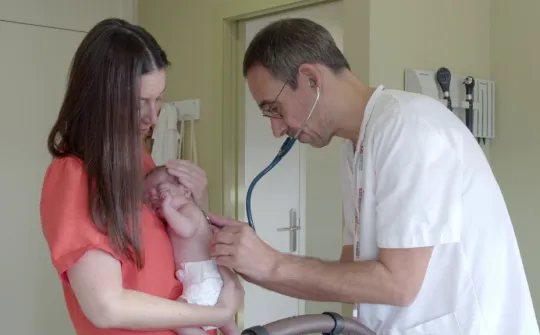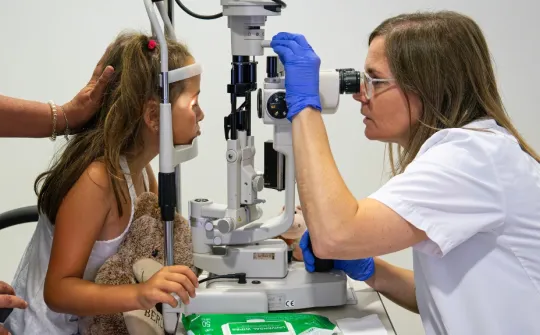
Some children and young people feel fear and anxiety when they have to undergo a medical procedure or surgery. For patients with functional diversity or developmental issues, these sensations can be intensified. The Child Life team visits these patients before any procedures to help improve their overall experience.
Some children with functional diversity or developmental issues, such as patients with autism, find social interaction and expressing their needs difficult: they exhibit repetitive behaviours; are highly sensitive to sounds, lights and textures; have problems communicating with their environment and/or understanding it, at times. All of these factors can make a visit to hospital, or even a routine medical procedure like an injection, a traumatic experience for the child if no measures are taken to alleviate it.
That is why the SJD Barcelona Children's Hospital launched the Child Life programme, with the aim of improving the experience of all patients at the hospital, especially those patients who, because of the nature of their disease, may find treatment more distressing. When a staff member detects that a patient is having trouble with a procedure, or if they believe the patient may need a specific form of support, they are referred to Child Life.
‘We ask the parents what happens when the child is agitated and then pass that onto staff, or ask what the best way to give medication is – with a syringe and syrup or by mixing tablets with something they like the taste of? Are they touch-averse or do they struggle to understand waiting times?’ explains Sònia Tordera, Coordinator of the Child Life team. ‘All this information is hugely useful, as we learn what we can do to keep the patient calm at all times during a medical procedure or when administering medication.’ This profile is added to the patient's medical history and is shared with any staff members who will be treating the patient at one time or another.
The team at Child Life have various strategies and resources at their disposal to improve the hospital experience for these patients. ‘It is hugely calming and important to have a support person or the parents present with the child at all times. In other cases, having a distraction, like a device or a toy, can be a great help. In some situations, music can be a big help. Other times, when the child has had previous contact with dog support at school or if they like animals, for example, dog-assisted activities can also be a useful way of keeping the child calm’, explains Sònia.
‘For us, as parents, it really put us at ease seeing how they treated Carla. They tried to understand her, even though she doesn't speak, and find out what she needed.’
Head of the Anesthesiology Department and Director of the Surgical Area, Juan José Lázaro remarks that, ‘Years ago, children with autism who had to undergo dental treatment had to be sedated and taken to theatre. Now, thanks to Child Life, they are better prepared for these procedures and know what to expect, so they can be treated in the normal consultation room,’ he notes.
Lázaro also stresses that the sensory clinical history provided by Child Life helps to avoid anything that could have a negative effect on the child. ‘For example, if the child does not like crowded rooms, there will only be one or two staff members, whoever is most necessary, with the child in theatre. The rest will enter afterwards. If the child has a special toy they are attached to and that they do not like to be away from, we check whether it can be taken into theatre so the child does not get nervous, then we remove the toy once the child is sedated’, he adds.
Carla’s story
Carla, who has autism, had tonsil surgery when she was just three years old at a facility in Barcelona. For her mother, Cristina, it is a bad memory. ‘They ended up strapping her to the stretcher because she didn't want the line to be inserted’, she recalls. A few months ago, she had to have surgery again. ‘This time, we asked our pediatrician to refer us to SJD because we knew that there was a unit for children with autism here’, says the mother.
A few days before the procedure, a Child Life staff member got in touch with the family to book an appointment to prepare Carla for the procedure. Using symbolic play with a ragdoll and some pictures, Child Life explained the surgery to Carla in a simplified way, suited to her age and her special requirements. They also took her to see where she would be staying during her time there, to help alleviate some of her fear and uncertainty.
‘For us, as parents, it really put us at ease seeing how they treated Carla. They tried to understand her, even though she doesn't speak, and find out what she needed and what she was scared of. It was also good for us since they told us ways that we could help her ourselves. We took the ragdoll back home with us, the lines, the mask and the pictures, and every day we would play the game Carla had played with Child Life, and we explained what would happen at the hospital. This meant that, on the day of the procedure, everything went smoothly. It was so easy and she was much calmer. It was less traumatic for everyone involved’, recalls Cristina.
For Carla, like many children with autism, injections and needles are particularly frightening. This fear, as well as other special requirements, were recorded in her medical history. So, when she arrived at the Surgical Wing, staff treating the girl already knew about her particular case. To stop her from getting nervous, they decided to insert the line after she was already under anesthesia. ‘They seem like small things, but they are so important. The work that Child Life does with kids with autism like my daughter turn what could be a traumatic experience into something far from it, better for her and for everyone involved’, Cristina says.



